It feels like ages since I last wrote a full blog post here. It also feels like ages since I last set foot on Ogijima. Well, it is – my last visit was in early March. I can’t believe it’s been this long! We’re really living through some crazy times.
My summer vacation is almost over. It was mostly spent at home, partly because of that <bleeped> pandemic, partly because of the heat that has been scorching all summer long, and partly because I needed some major rest after such a crazy Spring semester. I did even less than I had planned to (and I hadn’t planned to do much). The only notable thing is that I started a YouTube channel (you should subscribe, you may like it).
So before vacation is over, I think it’s necessary to write at least one blog post. Why not set sail to Ogijima for this?
This was about a year ago, during the summer session of the Setouchi Triennale. On August 17th, it was my 14th day on the islands for the festival for those of you taking notes. My friend Vincent and his family were visiting from New Caledonia. Of course, I had to show them my favorite island, Ogijima.
I mostly only took pictures of the art on that day. As I have already introduced most of the new art in previous posts, I kindly invite you to read them if you haven’t already done so:
Ok, are you caught up? Let’s see what this day had to offer then…
Of course, every trip to Ogijima starts with some time in the port, where Jaume Plensa’s Ogijima’s Soul always welcomes you. And since 2019, it has been joined by Team Ogi’s Takotsuboru:
The giant octopus trap was showing off its latest improvement: barnacles!
Team Ogi was running a workshop, mostly for kids, but not only, where you could paint your own small octopus trap. I think Vincent’s kids had fun. And Team Ogi’s members – among them Mr. Oshima – were impressed with Vincent’s T-shirt. The octopus kinda is Ogijima’s “totem animal” or its unofficial mascot in a sense.
After that, I showed my friends around a little bit. We walked to the beach only to find out that trouble had happened during the typhoon a few days prior:

As you can see, the road had been badly damaged. And as you may not see, the beach was pretty much gone. Usually, while there are rocks in the water, the sand strip is much wider. The road was being fixed a few days ago, not sure if it’s finished or now. The beach is closed this summer – mostly to deter visitors from coming to the island, but also to fix the road. I’m not too sure about the sand situation.
After our walk, it was time for some art. We started with Goro Murayama‘s Generative wall drawing on Japanese paper house.
I’m never really sure what to think about this piece. I think I like all the individual drawings, but my impression overall is that it feels unfinished or something. It may come from the support that was used. As the artist couldn’t actually paint on the house’s walls, he painted on plywood. Not sure if that was the best choice.
A few interesting bits about this building. First of all, it has housed artworks for every Setouchi Triennale but has been abandoned for the past forty years or so.
It was built a century ago. It mostly served as a general-purpose shop (daily items, fishing items, snacks, and more), which explains the layout of the building, especially the big room with a wide glass door on the side.
During the war, it became a ration distribution point. And after that, it was some sort of convenience store again until it closed in the seventies.
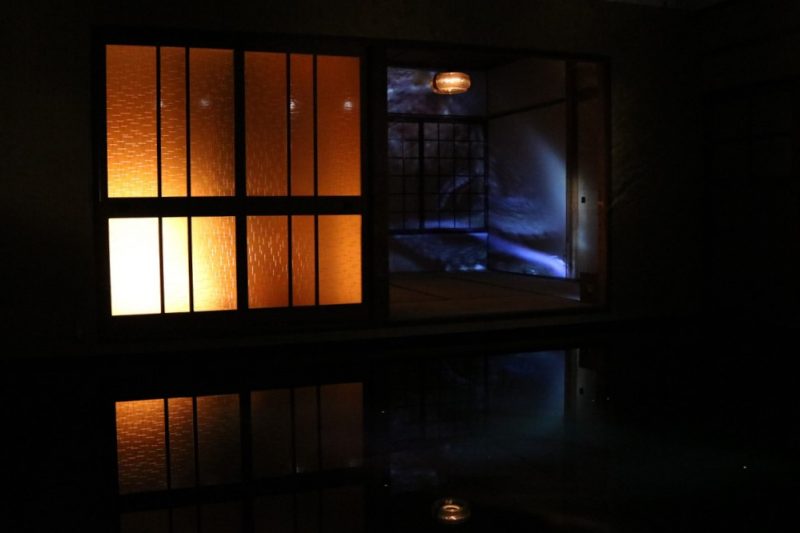
Sarah Westphal‘s The Sea Within – The See Within was one of the most beautiful artworks of 2019. Unfortunately, it was near impossible to take good pictures of it (at least with my mediocre photography skills). And it’s OK (unless you missed it), it wasn’t the kind of artwork you look at. It was the kind of artwork you experience (the best kind in my opinion).
I invite you to read Sarah’s interview to know more about the installation.
When you visit Ogijima’s art, your next stop is usually Onba Factory, my favorite place on the island. We only went near the end of the day. I didn’t take pictures if I remember correctly (or we didn’t have time to go? I can’t imagine).
Instead, our next stop was Takeshi Kawashima and Dream Friends Gallery that has a new semi-permanent installation (let’s say that it’s long term): The Space Flower – Dance – Ring which is impressive in many ways. I think it’s my favorite of Kawashima-sensei‘s installations on Ogijima so far (and it’s even more impressive knowing that he’s turning 90 this year!)
Once again, an artwork that is better experienced than seen (it should be around at least until early 2022).
Same thing for our next stop, a permanent installation that has been on the island since 2015, Akinori Matsumoto‘s Akinorium. An artwork that you watch as much as you listen to. All the structures are mostly made of bamboo, wood, and paper. They are mobile and make beautiful and soothing sounds in the process. This installation is special among the permanent Art Setouchi pieces in that it was a collaboration between the artist and Ogijima residents, and nowadays, it belongs to the Ogijima Community. It is also managed by the islanders.
After that, we got to enjoy Sea Vine by Haruki Takahashi that was doing its swan song last year. The installation had occupied the house since 2010 but was removed in late 2018. However, it returned changed in 2019 (in other words, a different sculpture following the same concept), but it was dismantled again early 2020. The reason is that the house is in a bad shape and will need to be repaired or demolished. However, Sea Vine will probably return in 2022 elsewhere (maybe not on Ogijima 
The following artwork was new. It opened for the summer session, and it’s the first time I’m showing it on this blog.
It’s called Trieb House by Toshikatsu Endo. A pretty amazing and a bit confusing artwork, once again much better experienced than seen. It’s set in an abandoned house that had already caught my eyes way back during my first or second trip to Ogijima, 10-11 years ago. Every time I see it, I’m surprised that it’s still standing (it was abandoned about 50 years ago). This house:
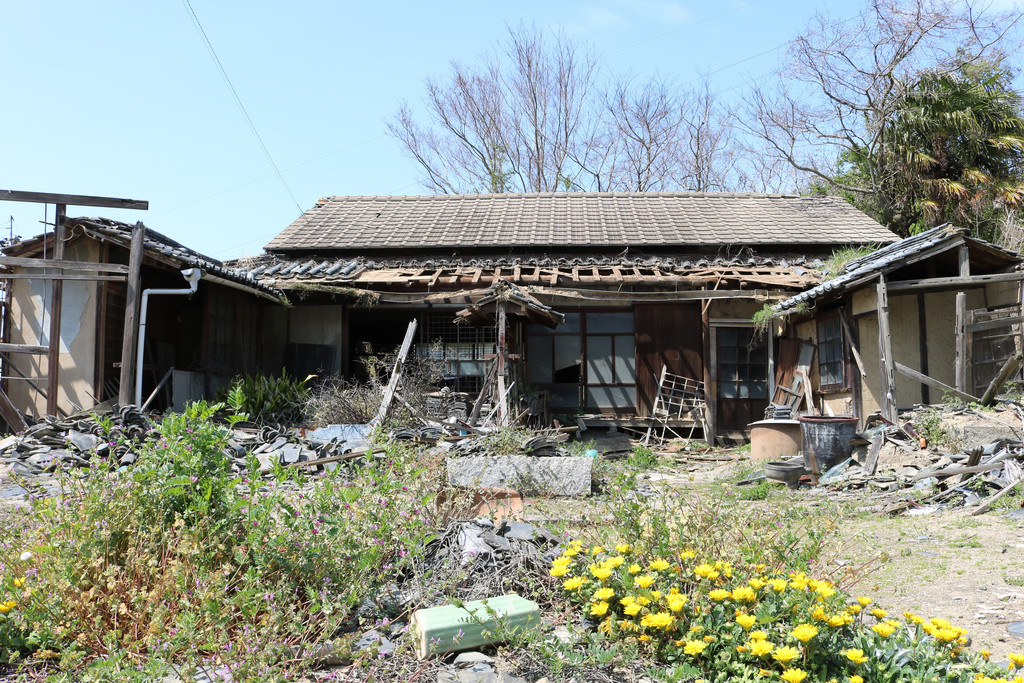
This picture was taken a few months earlier, before any work had been started. It still looks the same today (or at least the last time I saw it). That’s part of the point.
The installation was inside the house, but the house had to look as abandoned as ever. I spoke a little bit with Noriyuki Kawanishi about it. He is the architect who helped build the installation. In my eyes, he deserves a good chunk of the credit – even though you won’t see his name in many places. He told me that it was one of the most difficult projects of his life.
He built the thing pretty much alone, at the end of Spring 2019, as it was getting hot. The goal was to make sure the building remained structurally sound while undergoing major unseen changes at the same time. It had to look untouched from the outside. No visitor knows this, but this is in my eyes the most amazing part of this artwork.
By the way, Kawanishi-san is a local architect who is responsible for renovating many houses and buildings on Ogijima, starting with the library. I could be wrong, but I think he became acquainted with the island for the renovation of the building that was going to become the library, and – like many of us – he fell in love with the island. I think he even moved there recently. He has just started a new project on top of the village. I’m not sure if it’s going to be a private house or something else (he calls it a “self-project”). May I advise you to subscribe to his YouTube channel?


When you approach the house, it starts with a pretty loud and constant noise. Not unfamiliar, but one that you won’t expect coming from a house. When you walk closer, you see some movement inside from the broken window, but you’re not sure if you’re seeing what you think you’re seeing.
Once inside, there is no doubt left:
These are about five tons of water a minute pouring from the ceiling and into the ground, constantly.
The idea is that water represents life, so the artist is bringing life back into the house with water. On Ogijima, which has no natural springs, water has always been precious. However, it can also be destructive in large and sudden amounts, like during a typhoon.
By the way, rest assured, Ogijima nowadays has running water coming from Takamatsu – through undersea pipes. It only started during the second half of the 20th century, though.
A very impressive installation for sure.
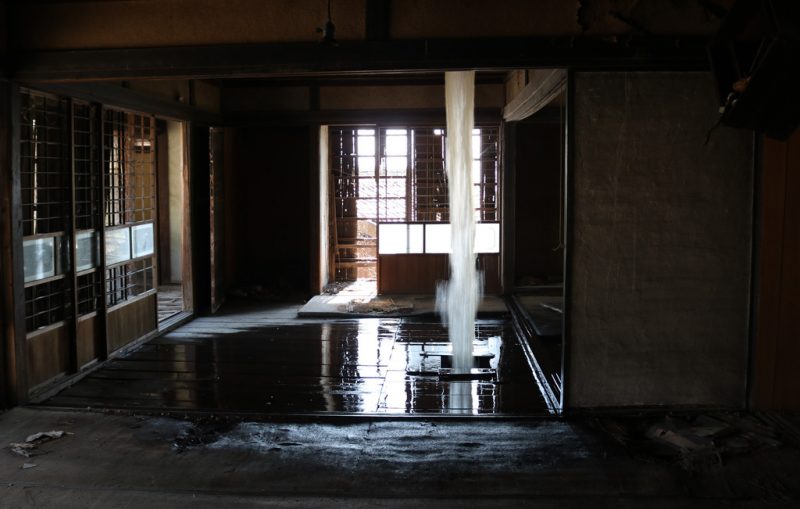
Right next door, you can find everyone’s favorite artwork, including mine (yes, I have many “favorite” artworks, this is not a contest, I can love many equally): Mayumi Kuri‘s Memory Bottle.



And right after, another favorite of mine: Oscar Oiwa‘s The Room inside of the Room.
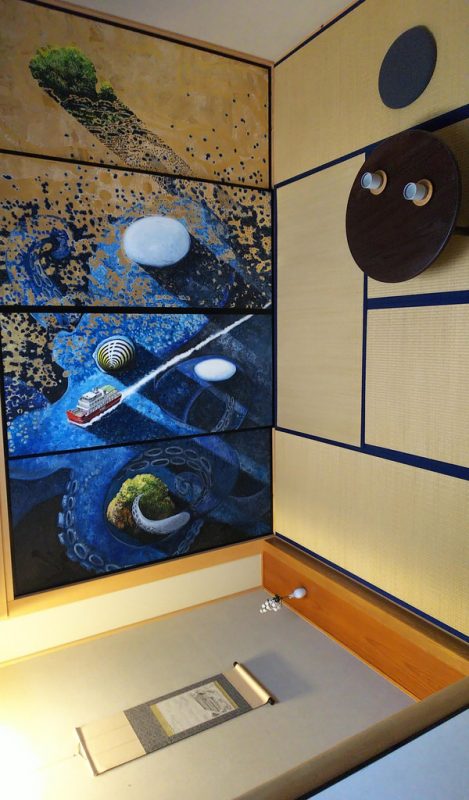
If you’re not familiar with the artwork, why don’t we let Oscar introduce it to you?
And that’s pretty much all for today. I’ll leave you with a final picture. A piece that can be found on one of the houses of Ogijima. It’s totally unrelated to the Triennale.
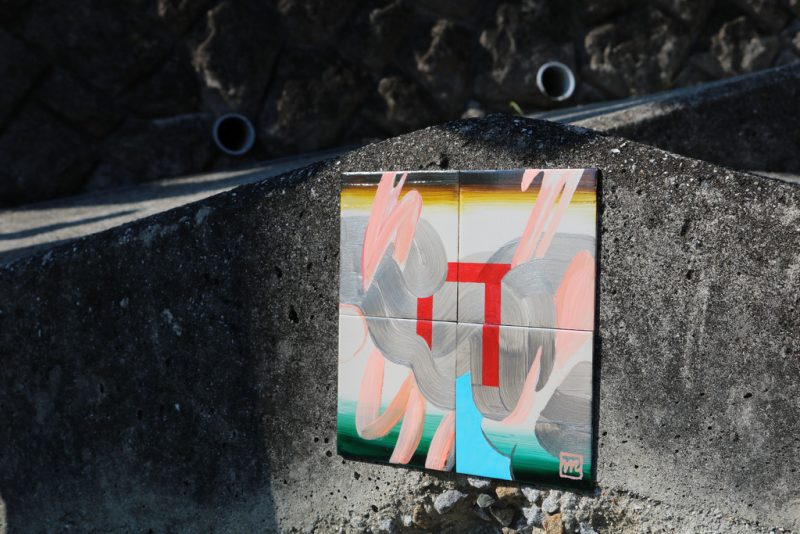
That is all for today, as usual, stay tuned for more.
Thanks for reading.




















